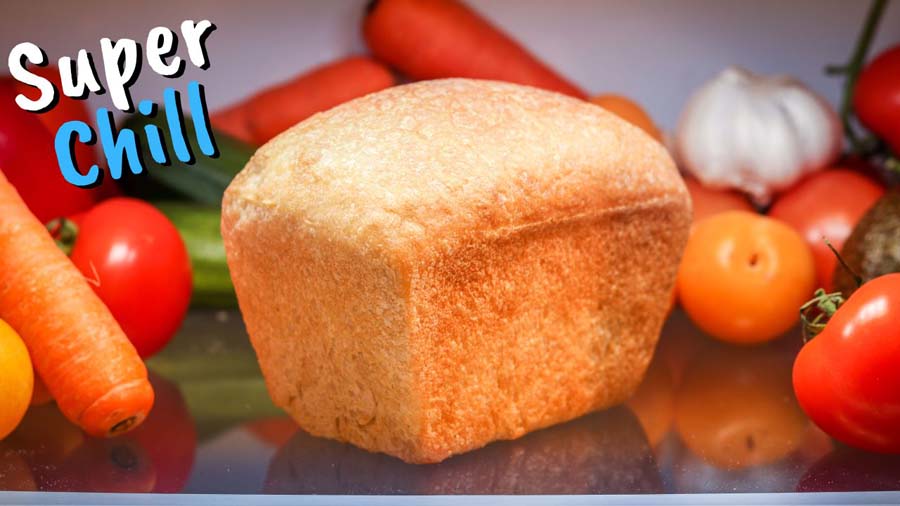Since I published all my cold fermentation instruction videos and all the cold fermentation comparisons, I have been getting the same question over and over. And that is whether we can both cold bulk ferment and then cold proof the same dough?
So, to be clear we would mix the dough, then instantly refrigerate it until it has well fermented, then we would remove it from the fridge only to shape it and instantly place it back for cold final proofing. Once proofing is done the bread would be baked right from the fridge.
I had never thought of this, but it sounded like an interesting concept and a great challenge.
Why would you use this method?
Both cold bulk fermentation and cold proofing are great methods for boosting flavour and changing the texture of bread. Both methods can be used to ferment the dough for quite a long time. Especially when it comes to cold bulk fermentation.
Both of those methods require some room temperature fermentation time. When it comes to cold bulk fermentation, the room temperature portion would be the final proof. And vice versa when it comes to cold proofing.
Each method has its place. Cold bulk is great for when you don’t have much time on the day of mixing the dough as you can quickly throw the ingredients together, pop the dough in the fridge and forget about it.
Cold proofing is the best method for when you don’t have much time on the day of baking. The bread can be baked right from the fridge, but it takes a little work and attention on the previous day in order to have it ready for final proofing in the fridge.
Combining the methods would be the best way to eliminate any room temperature fermentation thus allowing you to get on with your day and only checking in with the dough whenever it needs a fold or when it’s ready for final shaping or baking.
It is the best method for minimizing the attention you need to pay to the dough. That begs the question of whether this could be the most hands-off breadmaking method ever?!
How do we make this work?
In my cold fermentation guides I suggest using 1% yeast both for bulk fermentation and proofing. That of course is the amount that is perfect for my fridge which runs at 5C (41F).
Combining the two methods I decided to lower the amount of yeast to prevent the dough from fermenting too much. I went with 0.8% which turned out to be a little too much for a couple of the recipes I ended up making. The cold bulk fermentation took 24 hours, and the cold proof was another 24 hours.
It is up to you to find out the perfect amount of yeast for a certain fermentation time. It will most likely be different from the amount I use.
The recipes.
White loaf – 250g white bread flour, 160g water, 2g yeast, 5g salt.
Enriched rolls – 250g white bread flour, 2g yeast, 5g salt, 10g sugar, 25g butter, 100g milk, 1 egg (50g).
Pita – 200g white bread flour, 50g whole wheat flour, 170g water, 2g yeast, 5g salt.
All were mixed with a final dough temperature of 25C (77F). All were folded 30 minutes after first being refrigerated with another fold 4 hours later. These folds helped with cooling the dough down and with tightening the gluten which is important because all three were made using the no-knead method.
A third fold was performed the next morning to stop the dough from climbing out the bowl (I should have made smaller batches).
After 24 hours spent in the fridge final shaping was performed and the doughs were placed back in the fridge for final proofing. The next morning, they had risen and were ready to be baked, but I had to go to work, so I left them in the fridge, so the total final proofing time was 24 hours in the end. The whole fermentation took 48 hours.
The loaf and the rolls were baked for 30 minutes at 160C fan on. The pita was baked for 4.5 minutes at 250C fan off.
The results.
I can’t say I was super happy with the results, but at least it proved the concept. The thing is that a lot of times I make these recipes up on the spot and because I have a full-time job, I need to balance things which sometimes affect the results.
The loaf could have been baked sooner to avoid over proofing. Same goes for the pita, but that did not affect them too much. When it comes to the enriched rolls, I could have let them come up to room temperature before baking as they would have turned out lighter and softer that way.
Adjusting the amount of yeast would be another option with the loaf and the pita. Then they could be safely left in the fridge for the full time without fermenting too much.
As always, experimentation is key. That’s the only way to find out what works. Analyse your mistakes and learn from them. Try this method on your next bake and see how it turns out.
Watch the video here



